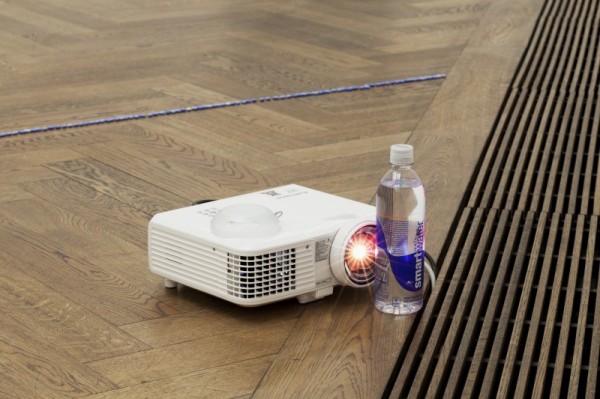Pamela Rosenkranz
Friday, 9 November 2012
Work from her oeuvre.
“Rosenkranz is interested in evolutionary mechanisms and processes, that seem to be the basis of how people are organized in a society. The artist is interested in the differences between body and mind, in human interactions, and in men’s relationship to nature. Rosenkranz explores these interests, utilizing scientific explanations that contradict our current notions of what it means to be human.
Rosenkranz uses a variety of materials. The emphasis is on the naturalness of these materials, and to that end even PET (Polyethylene terephthalate) can be seen as a natural product. Even though they claim to be the most evolved of all organisms, human beings are just one of many elements on our planet. Everything created by humans is natural; in this way, the concept of “artificiality” is called into question. Rosenkranz’ thinking is influenced by a materialistic perspective that calls the subject into question. The artist annuls identity and gender differences; her position as a woman is likewise rendered meaningless.
Rosenkranz’ works explore the various ways in which we define ourselves as human. They address fundamental human qualities, highlighting these and placing them in a partly new, partly familiar context. Even though the exhibition consists of individual works, it can be understood as one overall examination by Rosenkranz in which, themes and elements recur throughout the rooms of the Kunsthalle. In the first space of the Kunsthalle, the artist has installed a sink, which is the same as those found in the restrooms of the Campari Bar located in the adjacent rooms. The faucet is open and blue colored water flows permanently; its splashing against the ceramic sink makes a sound which superimposes itself upon the silence in the rooms. Strolling through the rooms, visitors will realize that the color blue is a recurring element. The evolutionary perception of blue within our visible spectrum was created at a pre-evolutionary stage when creatures only existed under the sea. Our sensitivity to this color has barely changed throughout the course of the history of humankind and we are still highly sensible for the wavelengths of blue than of all the other colors of the visible spectrum.
On large-format prints behind plexiglass, Rosenkranz presents monotone blue surfaces based on the IKB works (International Klein Blue) by Yves Klein that were created at the end of the 1950s and downloaded by her as JPEG’s from the internet; for these monochrome paintings produced by the French artist, he invented and patented a specific blue tone, which increases the brilliance of ultramarine blue. The color of Rosenkranz’ pigment inkjet prints is based on the data information which contains colors that are subject to prevailing light conditions, scan settings, or photochemical conditions, etc. The prints are hand-mounted and due to the manual operation bubbles arise undermining Yves Klein’s idea of an intangible heaven, and the immateriality of the sky: as the bubbles become objects they challenge the concept of air being immaterial.
In contrast with the color blue as Wild Blue Yonder (the fascination with the vastness of the sky) the color red represents physicality and the body. The color of blood next to genetic skin pigmentation is primarily responsible for skin tone. The red also shines through the white walls of the Kunsthalle, which have been painted with standard dispersion mixed with fake — or real — blood. A bottle of SmartWater filled with a liquid is set close to the pink wall. Is the content water or sillicon? Is it skin color? The work does not spell it out, and yet it refers to our desire to look fresh and eternally young. It is about the preservation of beauty, of purity as physical criteria of perfection. Health and fitness are two issues often recurring in Rosenkranz’ exhibitions, and here they come to the fore once again.
Another new work in the exhibition focuses on the influence of color in decision-making. A seemingly random sequence of gigantic expanses of color is projected in the two last exhibition spaces of the Kunsthalle. The projection is accompanied by a computer-generated voice called “Heather”. This voice repeats the words “Yes” and “No” – agreement and rejection – in every conceivable intonation available for the range of meanings offered by the voice program. At this point this work refers to a specific way in which colors have been used in the domain of science, especially in the so-called Brainbow project. This specific color spectrum is used by scientists and was developed while conducting experiments on mice to make their brain activity visible. The RGB color spectrum was used to color-code their neurons. Rosenkranz’ project in turn, is interested in knowing how existential human emotions can also be color-coded and how they can then be contemplated and categorized in a manner that is strictly analogous to colors.
Pamela Rosenkranz’ approach is not based on a scientific interest as such. She works with findings and speculations culled not only from the natural sciences, but also from politics, history, philosophy, and popular culture. The exhibition Feeding, Fleeing, Fighting, Reproduction therefore can be thought of as a self-contained project that revolves around the conflict between scientific description and subjective experience. Furthermore, she also criticizes a conception of art, which puts the focus on the artist’s subjectivity, and she does this by confronting statements and explanations from contemporary science with prevailing notions of art, thereby radically negating the use of terms like ‘experience’, ‘identity’, and ‘gender.’”- Kunsthalle Basel


